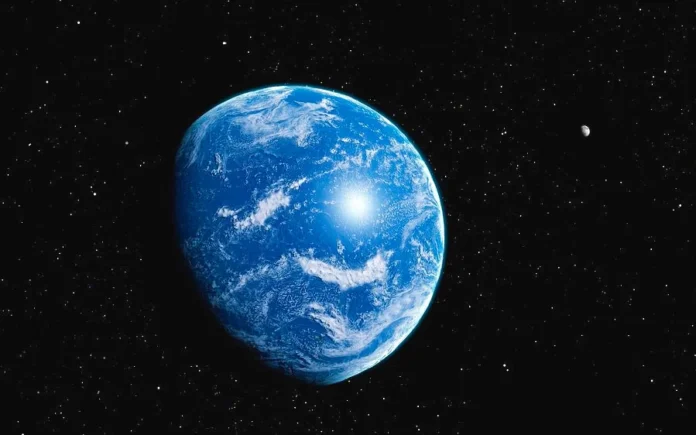 The scientists concluded that some planets in the Trappst-1 system may be covered with oceans of liquid water, but the issue of their potential is still open. The study was Published On Preprint Arxiv server.
The scientists concluded that some planets in the Trappst-1 system may be covered with oceans of liquid water, but the issue of their potential is still open. The study was Published On Preprint Arxiv server.
Astronomers conducted a new study of the planets that revolve around the Trapping-1 at a distance of 40 light years from the United States, which are close to cosmic standards. The first planets in this system were discovered 8 years ago, and today it is known that the Trapping-1 system consists of seven rock planets.
That is, these world -like worlds with a solid surface. At the same time, some planets are slightly smaller than Earth in size, some are larger. There are three planets in the area suitable for their stars, where the temperature allows liquid continuation on the surface.
Scientists continue to study these planets to search for possible signs of life, and now using the Webb Space telescope, scientists have discovered that these planets may be covered in liquid water oceans. Water is known to be a major element of life.
Trappist-1 is a red dwarf, which means it is smaller and cooler than the sun, but it emites from UV rays. Previous studies have shown that some planets in the system may contain a lot of water, but it is possible that the radiation resulting from the star will quickly evaporate.
A new study of planets in Trappist-1
Recent notes have shown that Trapping-1C may have water and oxygen vapor in the faces. In order for water vapor, a water source is needed, such as volcanic experience.
According to the current theories, when the planets are formed, their water is contained in the rocks. But because of the strong volcanic volcano early in the development of the planet, this water evaporates in the atmosphere. If the conditions are correct, then this water will lead to the formation of the oceans on the surface, as life may appear.
To explore this possibility, scientists created a simulation of volcanic skipping based on the rocky planets of the solar system, which are mercury, flower, land and Mars. Then compare this data with the notes of the planets.
The study found that the rate of branching on all seven planets ranged between 0.03 to 8 times from Earth. At the same time, they found that the average movement of the skill in the interior designs of the planets was similar to the Mars rate. But Mars is a deadly volcanic planet, and the same may be true for TRAPPIST-1 planets.
The study found that water release rates on Trappist-1 planets are likely to be less than Earth, but the potential range also includes lifting rates higher than Earth.
The results also indicate that the TRAPPIST-1 planets may have a relatively dry cloak, like the Earth. However, water on these planets may make up to 1 % of their mass. On Earth, only 0.02 % of the planet’s mass.
The scientists concluded that the three planets in the area suitable for tract-1 may not have volcanic activity, but they have different levels of water content. These may be water worlds covered with oceans from liquid water. But whether these worlds are suitable for life, it is still very difficult to say.

